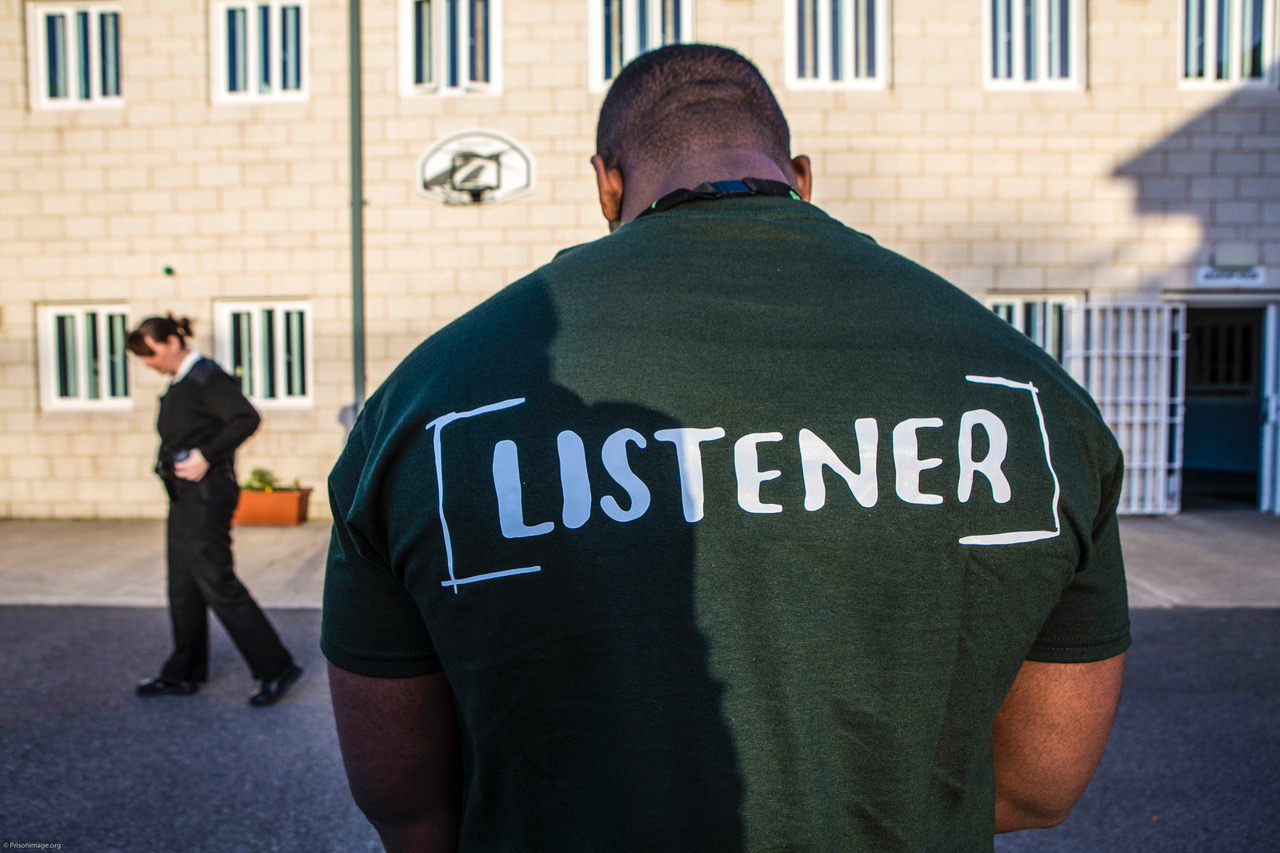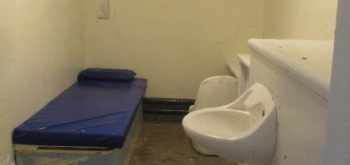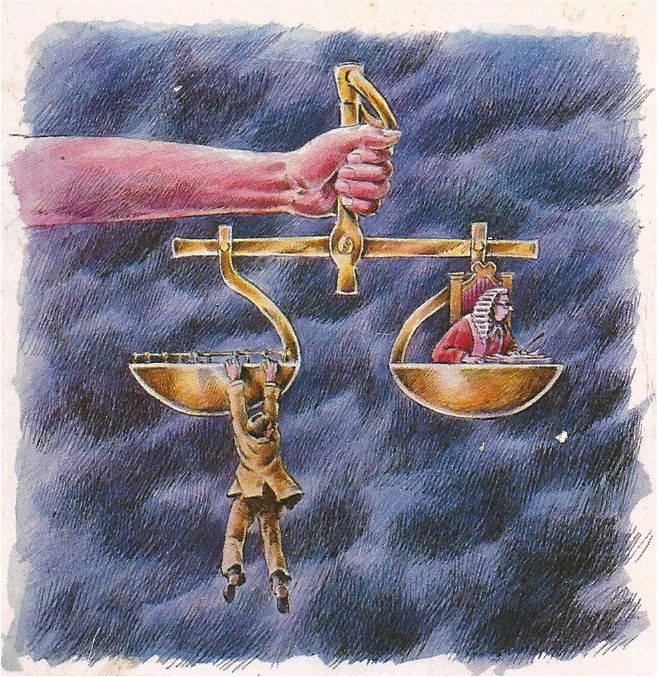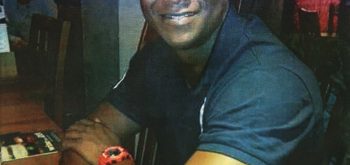[contextly_auto_sidebar id=”OllT3H4wCddHb4ZDidEyJmMo7zEqNCKh”]
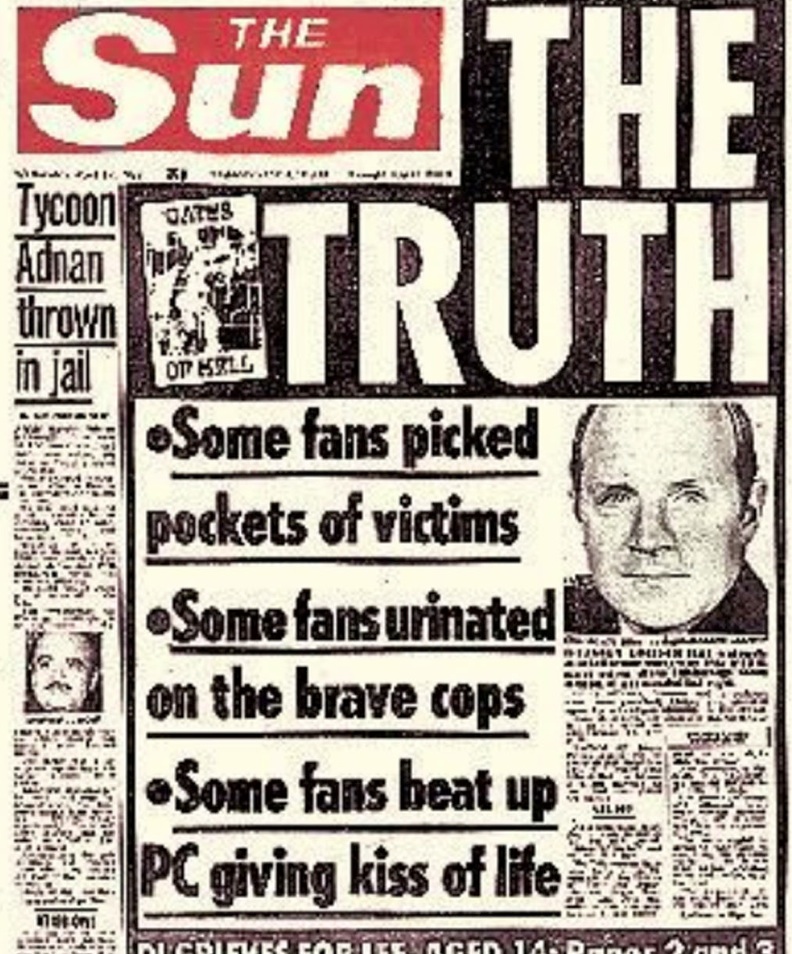 The Sun was not the first newspaper to realize that guessing the prejudices of the public and selling their own ideas back to them in the form of pleasingly affirmative expert opinion is an extremely profitable business.
The Sun was not the first newspaper to realize that guessing the prejudices of the public and selling their own ideas back to them in the form of pleasingly affirmative expert opinion is an extremely profitable business.
- Chris Horrie’s essay will appear in a forthcoming Justice Gap collection on them theme of ‘Justice in a time of moral panic’
But in the 1980s, driven by one of the most hard fought circulation wars in newspaper history, the paper turned the business of creating bogeymen and then going to war with them into an artform.
Introducing the Scum
The trick was to identify an already unpopular but preferably defenceless minority group and target them mercilessly in the paper. These people were The Scum. It was the perfect tabloid word – vague enough to be a smear, but vicious enough to cause outrage and provoke a response; emotive and even typographically pleasing when used in a sledgehammer wanted poster headline on the front page.
Scum was the most derogatory word available – far worse than the banned ‘C’ word. The Scum agenda came from the brutalized prison language popularized by the macho cockney characters in the soap operas which constituted the core news agenda for the paper. Almost everyone in prison (and in the newsroom of the Sun for that matter) called everyone else a c**** – so much so in fact that it could be a term of admiration or even endearment.
Not so with Scum. Call somebody Scum in prison, or in the script of EastEnders and there was no way back. There was only one thing to do with Scum: hang them; crush them, urinate on their dead bodies, rob their corpses and dance on their graves. Except, of course, hanging was too good for them. In 1984 a headline describing striking Yorkshire coal miners as THE SCUM OF THE EARTH had caused the Sun’s printers to go on strike until it was removed.
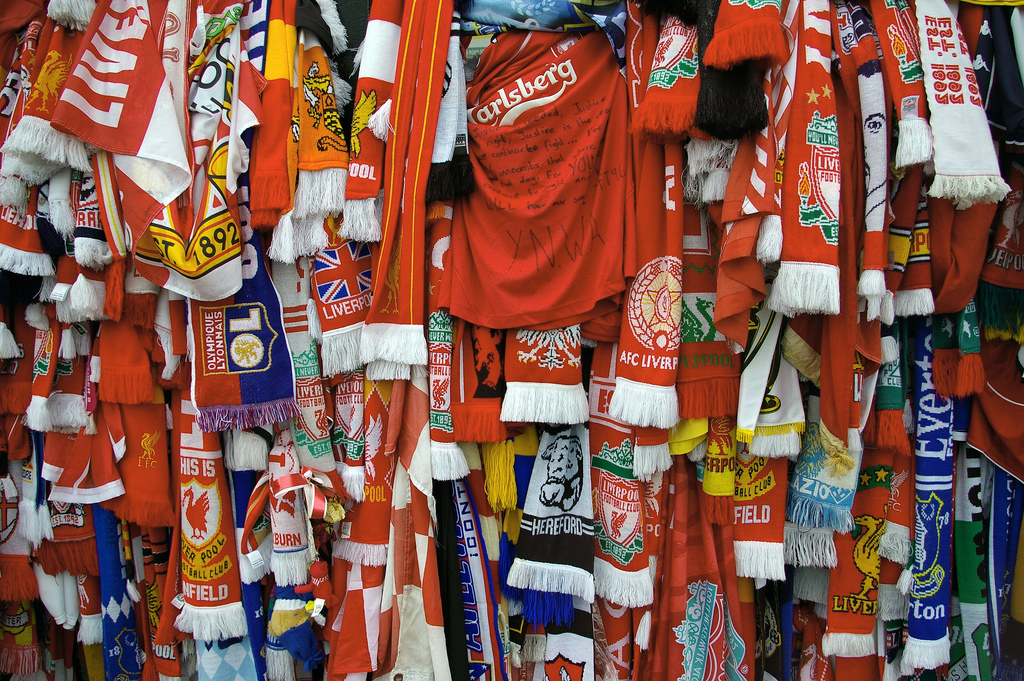 Through the 1980s, starting with Myra Hindley, the Sun progressively managed to find more and more Scum individuals and groups, so that by the time of the Hillsborough disaster at the end of the decade pretty much the entire non-Sun reading population of the UK could find that they were guilty of being Scum.
Through the 1980s, starting with Myra Hindley, the Sun progressively managed to find more and more Scum individuals and groups, so that by the time of the Hillsborough disaster at the end of the decade pretty much the entire non-Sun reading population of the UK could find that they were guilty of being Scum.
By that time the category was extended to all prisoners, all criminals, drug-takers, football hooligans, most blacks, homosexuals, militant trade unionists, muggers, students, The Greenham Women, demonstrators, hippies, dossers, tramps, beggars, social security scroungers, squatters, terrorists (especially the IRA), vandals, graffiti artists, prostitutes, gypsies, the mentally ill, winos, essentially all foreigners especially the Filthy Frogs and Cheating Krauts and all social deviants, particularly sex offenders (The correct term there would really have been nonce, but this was not used in the EastEnders soap due to OFCOM restrictions, so the Sun followed suit).
If an individual in a crime report was found to fit more than one of these categories, then they would become known on the newsdesk as ‘double scum’ – a homosexual terrorist for example, or even treble scum, such as a black rapist high on drugs. A triple scum story would produce enthusiasm on the part of the akin to a jackpot payout on a pub slot machine, and the front page would be cleared. In some parts of the country it almost reached the point where you had to turn up at work carrying a copy of the Sun in order to prove that you too were not Scum.
With a kind of evil brilliance the paper had maneuvered itself into the position of guardian and crusader on behalf of its readers (Hard-Working, Fun-Loving, Crime-Fearing Salt of the Earth Families) against the ever growing hoards of Scum who lay siege to their dreams and populated their nightmares. It was only the Sun – the good old Current Bun – which had the guts to tell THE TRUTH about THE SCUM.
This formula of popular witch-hunting had crushed its only effective market competition, the socialist conscious-stricken and pro-Scum (in he estimation of the Sun) Daily Mirror which was spluttering badly under the inept leadership of its new owner – the bankrupt financial fraudster and borderline psychotic Robert Maxwell. The Mirror had sold more than the Sun until 1979. Now a decade later the Sun outsold the Mirror by a cool million, and had zoomed further down-market to see off a what appeared at first to be a new and serious threat in the form of The Daily Star which had attacked the Sun’s other main USP – sex.
‘Tits, bums, QPR and roll your own fags’
The Daily Star had not bothered with the dismal aspects of scum agenda to any great extent and concentrated instead on exploiting the arrival of colour printing in newsprint to offering the football results and TV listings, and otherwise functioning as a daily porn mag on sale at the big, big bargain price of 10p. The formula was described by the new paper’s editor as being one of ‘tits, bums, QPR and roll your own fags’. The Sun was worried, telling the 250,000 readers it lost to the new paper, that the Sun had all the above, plus ‘real news’ – meaning real news about The Scum.
But there was more to the Sun’s circulation success than the raw, aggregated national sales figures. The numbers at the regional level showed that in the south, and especially amongst skilled working class males (social group C2 in the standard demographic categories of the time) in the south (then thought of as car factory workers; but imagined by everyone pretty much as any non-Scum or slightly-Scum/reformed Scum character in EastEnders) the Sun outsold the Mirror by five to one. In certain C2 hotspots, such as Swindon and Basildon, the Sun had a virtual monopoly, and were claimed as ‘Sun territory’ and this was reflected in every aspect of the paper’s operations from ad sales and selection of winners for its bingo competitions, to the news agenda an even the supposed hometown of page three girls.
This regional targeting was a dramatically effective commercial strategy and was followed so rigidly that the Sun often was, in effect, a regional paper for London and home counties, which happened to be distributed nationally (unlike every paper at this time the Sun did not even make a token attempt at producing a northern edition).
Sometimes the origins of a Page Three girls would be attributed to Bolton – or even Sunderland – if there was a sales drive on. It was rare that Liverpool would be selected for such an honour. The problem was that any positive coverage of the north would not add much to sales up there, and might alienate the core southern target audience.
It would be an exaggeration to say that the Sun regarded the north as a foreign country, but not much of an exaggeration, especially in the case of Merseyside. In the 1980s the city and its population had become something of a cartoon cutout caricature of everything that White Van Man loathed. Scum City. The inhabitants had rioted in the early 1980s in response to the public spending cuts of the first Thatcher government. Unemployment was so high in the city that being known as a Liverpudlian was for a time almost synonymous being unemployed and claiming benefits.
On top of this Liverpool had for at least 200 years been a poor, melting pot immigrant city, with people mostly fleeing poverty and even famine. As a port city Liverpool was multiracial and probably more racially mixed than any other major city in the UK. The regrettable, but apparently universal, human tendency to blame the poor and disadvantaged for their own plight kicked in. The unemployed were workshy; the poor were ignorant and useless, racially mixed marriages somehow showed social breakdown, and the resulting families were little more than breeding grounds for generations of thieves.
Football was an outlet for some of these stereotypes. Fans of rival teams, especially those from London, would endlessly taunt the ‘scousers’ often based around the true story that local youths in the run-down streets around the Liverpool FC stadium operated what amount to a begging/ protection racket based on ‘minding’ the cars of visiting fans. Money would be demanded and if not paid the car would be vandalized, normally by means of stealing the hubcaps. The hubcaps, together with a possibly invented story that some cars targeted in the parking protection scam had actually been jacked so that the tyres could be removed.
What else would one expect from The Scum?
These stories were given huge coverage in the Sun – it was rare to see any news in paper about the north of England unless it was about crime, stupidity or indolence of some sort and they caught the imagination out of all proportion the prevalence of the problem. The over-estimation of the danger of crime is one of the most well-known phenomena in social psychology – especially the over-estimation of the danger of crime in foreign countries. And by the mid-1980s the Sun was reporting on Liverpool as though it was not a city full of fellow citizens, but as effectively a foreign country which – given the radical politics of its local authority for a time – was to an extent at war with the rest of the UK.
‘Bish, Bosh – look at all my Dosh!’
The ‘80s TV comedian Harry Enfield created a character called Loadsamoney based on White Van Man types he had seen on the terraces at Spurs’ White Hart Lane stadium taunting visiting Liverpool fans by waving brick-size wads of banknotes at them and shouting ‘You c***s will never have a wad like this’ and taunting them come and steal if off them. Others would fan the money out: ‘Ere it is, come and get it’ or even pretend to throw it around like confetti. Loadsa made his first appearance in front of a gang of drunken Millwall supporters in the Tunnel Club in Deptford where his brutal jokes at the expense of Liverpool supporters and their poverty went down like a storm. He was so convincing that the audience thought he had wandered in from the street to watch the show, not realizing it was an act.
Transferred to TV, the character, now abbreviated football-style, to ‘Loadsa’ was an instant hit, hyped to stardom by the Sun and its editor Kelvin MacKenzie, himself a Millwall supporter, who was a genuine personal fan of the character, as well as spotting his tabloid potential. A still picture of the Loadsamoney character was printed by the Sun to promote its Bingo competition – lip curling and waving his wad, with the speech bubble caption: ‘Bish, Bosh – look at all my Dosh!’ Enfield, horrified, realized that the character he had intended as a hated satirical monster – an intended pariah – had been turned into a sort of national hero for his scoucer-baiting antics and general loutishness. Enfield killed off the character and was immediately attacked by the Sun: ‘Shut your marrrff and look at OUR wad. Seriously we believe you should buy yourself a decent sense of humour.’ That paper advised Enfield.
On the football terraces, the real live Loadsamonies were of course less restrained even than the Sun. A wave of anti-Liverpool football chants did the rounds like a sort of modern day calypso commenting on the bad news about Liverpool featured on TV and in all the papers, but often wildly flamed up in the Sun as with the hubcap protection racket stories.
Liverpool fans, despite everything had in reality a less worse record for hooliganism than other clubs. Their famous terrace song ‘You’ll never walk alone’ was a symbol of wholesome community solidarity and fellowship more connected with a lost age of bobble hats, rattles, Bovril, brass bands and the singing of ‘Abide with me’ at the FA cup final than the foul-mouthed and massed invitations to tribal combat which passed for chanting of the tabloid TV age.
Rival fans in the early 1980s had responded to the 1981 Liverpool riots by adapting “You’ll Never Walk Alone” as follows:
Sign on, sign on, with no hope in your heart
’cause you’ll never get a job
You’ll never get a job!
Sign on, sign on, with no hope in your heart.
And you’ll never work again…
The Sun picked up on the theme naming the 1986 FA Cup final between the two Merseyside teams, Liverpool and Everton, ‘The Giro Cup’ and then promptly ignoring it. Likewise, just a few months before the Hillsborough disaster in 1989 the Sun gave reported Liverpool’s record 9-0 FA cup victory over a London club, Crystal Palace with a single paragraph. Such a large win at the senior professional level was intrinsically newsworthy in is own right. Football filled up half the content of the Sun and if this result had involved a southern team such as England or Chelsea, then the paper would doubtless have put it on the front page, and probably run it through the entire first half of the paper.
As the decade of the ‘80s wore on and unbeknownst the Hillsborough moment of truth grew closer, the terrace level stereotyping and the tabloid headlines began to feed off each other. One popular anti-Liverpool chant, sung to the tune of ‘You are my Sunshine, my only Sunshine’ went like this:
You are a scouser,
A thieving scouser,
You’re only happy, on giro day.
Your dad’s out stealing,
Your mum’s drug-dealing,
But please don’t take… my hubcaps… away.
And to the cadence of the sentimental folk tune ‘In my Liverpool home’:
In your Liverpool slum,
Your mum’s on the game and your dad’s in the nick,
You can’t get a job ‘cos you’re too f***ing thick,
In your Liverpool slum.
This was the scapegoating atmosphere which made it possible for the Sun to think there would be a commercial advantage in selling this sort of half-baked ignorant prejudice being voiced all over the country back to the public as brave and iconoclastic journalism. The other papers might take the sanction of the bleeding heart. Only The Sun was prepared to tell The Truth.
The Sun on Tuesday said in its editorial column that such criticism was not justified, and that the police were being used as “scapegoats”.
The disaster, the paper said, had happened not because of police failure but ‘because thousands of fans, many without tickets tried to get into the ground just before kick-off – either by forcing their way in or by blackmailing the police into opening the gates’. The ‘blackmail’ was the screams of people being crushed to death, many of them children. ‘So far,’ the paper complained, ‘we have not heard a word of criticism of those fans in Liverpool.’
The following a day a full account of the disaster from the police point of view was prepared by the Sun’s most experienced reporter, Harry Arnold. The paper had deployed about 20 reporters in Liverpool and in Sheffield to trawl for ‘dirt’ on the Liverpool fans, including the victims, slanted towards the angle the victims were unsavoury characters who had brought about their own tortured deaths and injuries and who, the readers might think, might have deserved their fate.
A series of sub headlines appeared above Arnold’s front page story read as follows:
Some fans picked the pockets of victims.
Some fans urinated on brave cops.
Some fans beat up PC giving kiss of life.
The story itself read as follows:
Drunken Liverpool fans viciously attacked rescue workers as they tried to revive victims of the Hillsborough soccer disaster, it was revealed last night.
Police officers, firemen and ambulance crew were punched, kicked and urinated upon by a hooligan element in the crowd.
Some thugs rifled the pockets of injured fans as they were stretchered out unconscious on the pitch.
Sheffield MP Irvine Patnick revealed that in one shameful episode a gang of Liverpool fans noticed that the blouse of a girl trampled to death had risen above her breasts.
As a policeman struggled in vain to revive her, the mob jeered: ‘Throw her up here and we will **** her.
The editor, Kelvin MacKenzie, at first intended to headline the piece YOU SCUM. This time there were no striking print workers to cramp his style. They had all been sacked – every last one of them – as part of the paper’s move to its new union-free production center in Wapping. It fell to the sub-editors to beg him to tone it down. Some of dead might have been innocent. Some of them could even be Sun readers. MacKenzie relented, and changed the headline to the two words any newspaper prints at its peril:
THE TRUTH
Arnold was normally the paper’s royal correspondent, and therefore an expert at staying within the fine lines which, through a series of legal loopholes, linguistic tricks and newspaper conventions, enabled the paper to turn the base metal of rumour and educated guesswork and comment and the pure gold of apparent fact.
The key device was the use of the vague quantifier ‘some fans’ which made the allegations legally safe and, at the same time, undeniable. ‘Some’ could mean as few as two. Nobody could reasonably maintain that they were certain that no fans at all had engaged in bad or stupid behavior. The use of ‘some’ also gave the paper protection against action for libel, as Liverpool City Council later found when it attempted to sue The Sun over the allegations.
The piece was a perfectly constructed smear. Each allegation or factual statement was checked and re-checked as accurate where it could be verified. This applied to the allegations about urination and defecation. It was later pointed out that in crushing disasters like this the dead and dying often appeared to be defecating. The reality was that the contents of their stomachs tended to be squeezed out of them like toothpaste out of a tube.
Where allegations could not be verified they could safely be invented or, better yet, attributed to, or run through, willing ‘rent-a-quote’ authorities such as Irvine Patnick. Every national paper has a coterie of publicity-seeking MPs and other experts willing to conveniently voice an opinion needed for a story.
There followed an extraordinary consumer reaction in Liverpool. A street demonstration took place in Kirby, during which the paper was burned. This was the first time a newspaper had been burned in the streets in Britain since the Daily Mail in the 1930s had been burned in the Jewish East End after running a front page giving its support to Oswald Mosley’s pro-Hitler Blackshirt movement. All over the city copies of the paper were being ripped from people’s hands. Some newsagents refused to stock it and others put it under the counter.
The Liverpool Echo replied in the name of its readers, and the population of the city as a whole:
We challenge the London papers and the Sheffield police: SHOW US YOUR EVIDENCE. Printed below was a statement in the name of the Liverpool branch of the Police Federation, dissociating themselves from the activities and statements attributed to the Sheffield police, which were described as ‘despicable’. As the boycott and protests gathered pace The Sun’s reporters in the city went in fear for their safety, and some tried to pass themselves off as working for other titles, including – ironically enough – the Liverpool Echo.
The Sun’s sales in the Liverpool area collapsed, falling by almost 40 percent from 524,000 to 320,00 sales overnight. There had been similar sales losses and boycotts in the past. But this time the readers did not return. The new lower level sales began to be locked in as the newsagents began to slash their orders, some of the larger multiples by as much as 80 percent. The loss in sales was running at about one million copies a week, a loss of about £3 million a week, and there was a sales dip right across the North West. Taking sales discounts and lost advertising revenue into account, the TRUTH headline was costing News International about £15 million a month at 1989 prices. The low sales persisted for decades, becoming almost part of the definition of Liverpudlian civic pride.
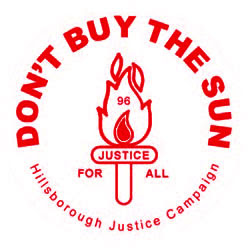 Kelvin MacKenzie, the editor responsible for the headline was not unduly troubled. He continued to edit the paper for another 15 years, and would sometimes tell people that his story about Hillsborough an essential truth to it. ‘My only mistake was to believe a Tory MP,’ he would complain. ‘That is where I went wrong.’
Kelvin MacKenzie, the editor responsible for the headline was not unduly troubled. He continued to edit the paper for another 15 years, and would sometimes tell people that his story about Hillsborough an essential truth to it. ‘My only mistake was to believe a Tory MP,’ he would complain. ‘That is where I went wrong.’
In the decades that followed the Sun supremacy in the popular market became so assured, that the Scum agenda was progressively toned down. The macho, bullying, swagger and nasty edge of picking on minority groups was lessened, or at least the cast of cartoon character villains changed. By the turn of the 21st century it seemed that the tabloids were facing a long, slow death in circulation terms and so the hard edge evaporated, the need to constantly cause outrage was diminished.
When future historians look back and try to find the exact date of the death of mass popular journalism in the UK, at least in print and in the sense of a majority of the population reading the same thing at the same time, there will be several potential milestones.
But none of them will be as significant as the Sun’s coverage of Hillsborough, a tragedy which claimed the lives of 96 people; but the day on which the bond of trust between popular newspapers and mass of the people perished along with them.




